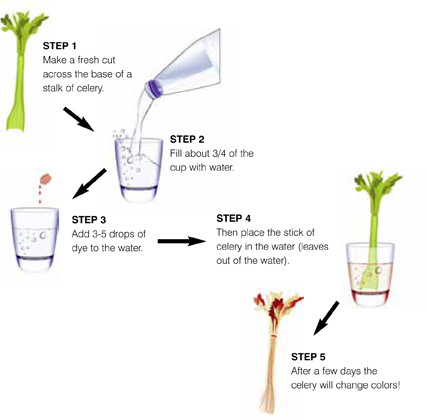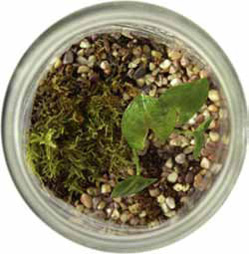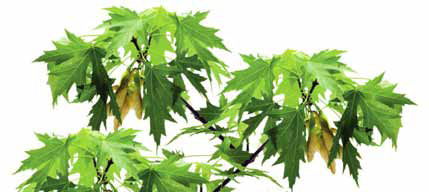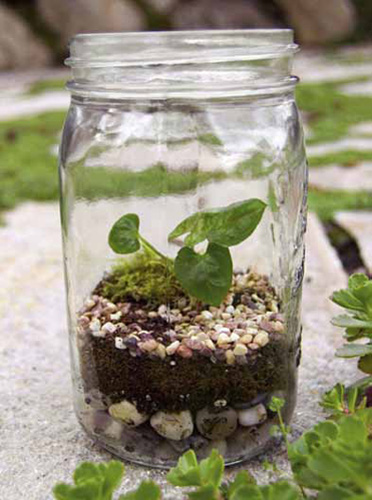Models Help Us Understand Living Things
A stalk of celery can model the process of capillary action, by which plants conduct water from their roots to their leaves. Place a freshly cut stalk of celery in a glass of water that has been tinted with red food coloring. After a few hours, you will be able to see the red liquid in the veins of the plant. You can trace the path of the water as it makes its way from the stem to the leaves of the celery stalk.
RED CELERY EXPERIMENT
YOU WILL NEED:
- celery stalk
- knife
- red food dye
- container sized to allow celery to sit in solution of food dye over night.
- water

You might be wondering what happens to the leaves over time. Make a cut across the celery stem and use a hand lens to observe. If you look carefully, you will see tiny red vessels that carried the food coloring to the top of the stalk.
A terrarium is a great way to model an ecosystem. You can build a terrarium in a gallon jar, an old aquarium, or any clear glass container.

If you add a lid to make a closed terrarium you'll have your own miniature ecosystem in a self-sustaining greenhouse. At night, plants use oxygen and release carbon dioxide. In the daytime, during photosynthesis, plants use the carbon dioxide and release oxygen and water vapor. The water vapor stays trapped within the system, creating moisture for the plants.

 Small gravel and moss placed on top of the soil helps retain moisture.
Small gravel and moss placed on top of the soil helps retain moisture.